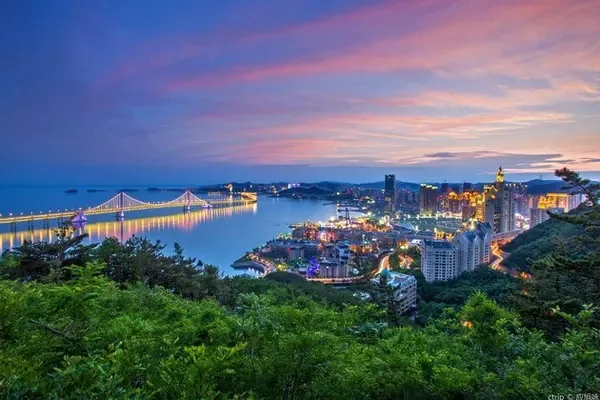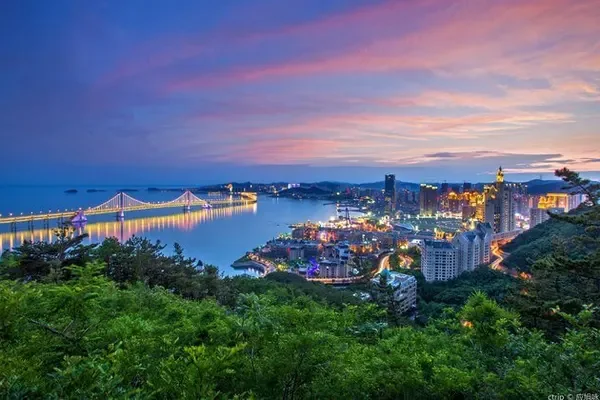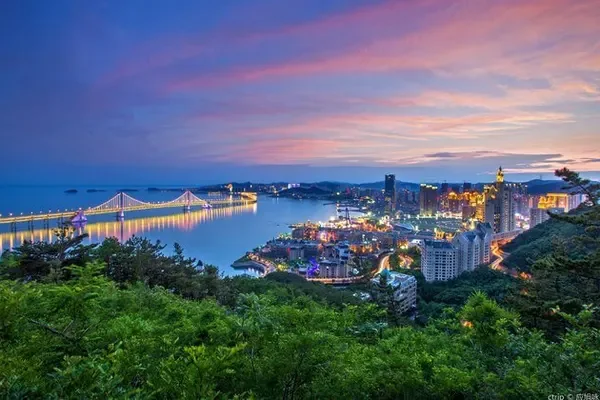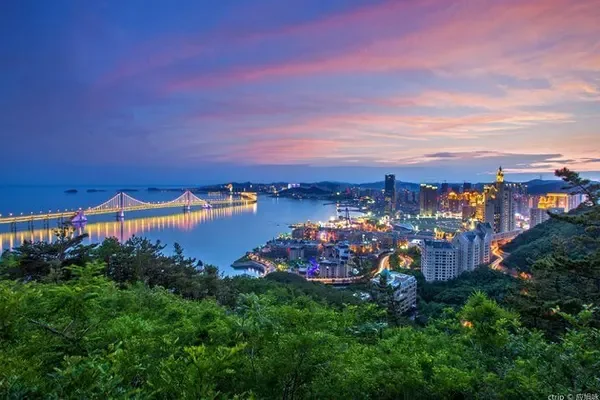After the epidemic, it was the first time to travel across other provinces. On September 4, I took a 4-day tour with the Soku Photography Group. The itinerary was Lijiashan Village in Qikou, Jingbian Wave Valley, Ganquan Grand Canyon, and Hukou Waterfall in Shaanxi and Shanxi provinces.

In the morning, take the shuttle bus from the courtyard to the Old Summer Palace to gather, and the bus will go ahead at 7:00 on time, and take a rest in the two service areas (Hebei Wangdu, Shanxi Jingle) service areas and other places. After 10 hours, we arrived at Qikou, Linxian County, Luliang City at 5:00 p.m., then changed to a local minibus and drove on the winding mountain road to Lijiashan Village.

In Lijiashan Village, Qikou, Linxian County, I first saw an old man in a simple natural village with a white towel wrapped around his head and a sheepskin waistcoat. The most striking thing was the QR code of the brand hanging around his neck. Simple and technological Formed a stark contrast.

Lijiashan Village, Qikou Town, Linxian County, Shanxi Province has been rated as a famous historical and cultural village in China. There are about 100 courtyards in the village, which retain a variety of luxurious Qing Dynasty dwellings and ordinary cave dwellings. Folk customs and rich Yellow River culture are valuable materials for studying ancient folk customs in my country.
The terrain of the village is very peculiar. The buildings are distributed on the high hillside hundreds of meters vertically. The slope of the hillside is about 40 degrees. Almost all the buildings make perfect use of the trend of the mountain and are combined with the hillside. From a distance, various buildings of different shapes are superimposed on top of each other. From the ditch to the top, there are as many as nine floors, which is extremely magnificent.


When I was editing my travel notes, Teacher Qin in the group (practice at the end of the world) sent a photo, which shocked me immediately, "Oh, this is the Potala Palace", which is the Potala on the Loess High Slope palace. (The picture below was taken by Mr. Qin)

There are two small ditches flowing southward in the village, which meet in the south of the village and flow into the Yellow River. The hill between the two ditches is shaped like a phoenix head, and the left and right mountains are the wings of a phoenix. This terrain is considered by Feng Shui experts. It is extremely beneficial to gather wealth. The streets inside the village are high and low, paved with block stones, very neat and orderly.

In the evening, the villagers started to cook and eat after being tired all day. The husband and wife chatted. The experienced model Li old man confidently sang a Shanxi folk song---Xintianyou, smoked a bag of cigarettes leisurely, and led the little donkey home.




Stay at Qikou Ancient Town, Linxian County, Luliang City, Shanxi at night---Huanghe Family, with the Yellow River as the boundary, Shanxi and Shaanxi. Qikou Town is an ancient ferry and a major town in the north of the Yellow River Water Transport. At the foot of Crouching Tiger Mountain, the streets of Qikou Town turn east to north and turn for five miles. A design professor once said: "This kind of building is called a three-dimensional blending vernacular building, and it has a unique architectural style in the world."



I stayed at the Qikou Inn, which is located in the core area of the ancient town, backed by Luliang Mountain, facing the Yellow River, and close to the Qikou Wharf. Qikou Inn, formerly known as Sihetang, is mainly engaged in the trade of sesame oil. In its heyday, "hundreds of boats were moored at the window, and thousands of camels were driven by the door". The business reached Baotou and Yinchuan in the north, "Sanbian" in Shaanxi in the west, and Taiyuan, Beijing, and Tianjin in the east. After several changes, it became an inn at the beginning of this century. The buildings in the courtyard are divided into upper and lower floors. The lower part is a cave-style building, and the upper part is a row of Chinese-style checkered wooden doors and windows. The walls are built of bluestone, the roof is covered with green tiles, the high and raised eaves are scattered according to the terrain, and rows of hanging red lanterns are dotted among them, adding a lot of vitality to this ancient courtyard.
The characteristic Qikou Inn, although it is now decorated with beautiful flowers and decorated with rows of red lanterns, adds a lot of vitality, but the stone brick floor, steep stairs, and a series of decorations can tell its past history.



Qikou used to be a bustling waterway and land transportation place. The special products produced in the northwest, such as grain, fur, and medicinal materials, were transported here by water, and then transported to various places by land mules, horses, and camels. When they came back, they brought back some products. , Tea, matches and other daily necessities are sent to the northwest by water. Now that the highway and railway transportation is developed, Qikou has lost its former glory.
In the morning, when the sun rises red and the sun shines all over the land, the water of the Yellow River looks extraordinarily beautiful. Standing by the Yellow River and staring at the endlessly flowing water of the Yellow River, I imagined the scene at that time and the scenery of the past with surging hearts.


Leaving Qikou to visit the wave valley in the natural landscape of Jingbian County, Yulin City, Shaanxi Province. Jingbian Wave Valley is relatively close to Yan'an. I always think it is a scenic spot with boundaries. The radius is a large wave valley (locally called Jingbian Red Sandstone Canyon) is a treasure deep in the mountains. It is formed by millions of years of wind and water carving sandstone. The texture of rock sand is like waves, and it is really a geomantic treasure. I lament the magic of nature. The picture, the majestic and continuous Danxia landform, is here to take pictures here. Teacher An's small plane gives full play to his expertise, and takes a panoramic view of the wave valley at a glance.


Fortunately, the beautiful yoga instructor of the team fully demonstrated the graceful movements in the lens of the photographer, adding more beautiful scenery to the beautiful scenery.



We went to the Danxia landform on the water in the No. 3 scenic spot. The Longzhou Lake in the middle of the mountain is like a mirror of the sky shining on the earth. There is a green lake in the stone valley. What is even more surprising is that everyone praised it as a map of China. Have a visual impact. The calm green lake water and red sandstone constitute a beautiful landscape painting.
Here the landscape is the base of photography creation.



The plan was to take photos of the sunset on the water Danxia, but unexpectedly there was a strong wind and dust flying all over the sky, so I had to change my plan and head to Jingbian County. The weather was still gray just now, and suddenly I found that the sky was full of red, and there were cheers in the car immediately. Teacher Liu and the driver worked hard, and I temporarily found a suitable location for taking pictures. It is a modern oil refinery. The photographers were so fast, haha, they forgot about the pain in their backs and legs, and looked for the wall and the roof of the water tanker to capture this beautiful moment. The refinery was especially beautiful under the glowing red sunset. Afterwards, everyone joked humorously, "This is a good character, and God takes care of us."
I snapped two shots, but they were not in focus. Look at the photographer's heroic appearance.

The photo below was taken by Teacher Hongyehong and I borrowed it. The photographer focused on taking pictures on the roof of the abandoned water tank.






Photography is hard and happy. I set off early to "Oasis Yucha Grand Canyon". Yucha Grand Canyon is the place I have always wanted to take pictures. When I arrived at the scenic spot, I took a special bus for the scenic spot. The road was green, and various small wild flowers bloomed on the side of the road. , about 35 minutes to Mudangou.

I thought I could go directly to the Yucha Grand Canyon. The tour guide introduced that the best time to take pictures of the Yucha Grand Canyon is around 12:00 noon to 2:00 noon, and it is still early to go to Mudangou. It is said that a major earthquake occurred in Mudangou about hundreds of millions of years ago, which divided a mountain into two halves, forming a large crack, which was later washed by wind and rain to form a canyon. There are many wild peonies on the side of the road, so it is named Mudangou. The canyon is about 100 meters long and 1 meter wide.




From Mudangou Canyon to the next scenic spot, Erganquan Grand Canyon, it takes 20 minutes to take the scenic bus.
Ganquan Yucha Grand Canyon was formed naturally. It is the living Danxia in the world and the valley of Chinese dreams. This geology is very amazing. It is a natural treasure developed in 2017. It is the most unique and famous canyon, and it is also a paradise for photographers. The total length of the canyon is about 300 meters, the width is 1-2 meters, and the narrowest valley bottom is 20 centimeters. If the sky is clear at noon, sunlight penetrates through the cracks of the canyon, shining colorful colors and strange shapes.






The Hukou Waterfall on the Yellow River is a popular tourist attraction. It belongs to Hukou Township, Yichuan County, Yan'an City. On both sides of the Yellow River are Shanxi and Shaanxi. Our hotel is in Shanxi, opposite to Shaanxi. The Yellow River roars and gallops like a wave in a storm.




The mountains, rivers and rivers of the motherland are vast, thick, and majestic, and they are presented to everyone to share. A Yellow River chorus sang the greatness and pride in our chests, gave birth to a brilliant civilization that soared to the sky, and inspired the sons and daughters of China to be excited and excited!



